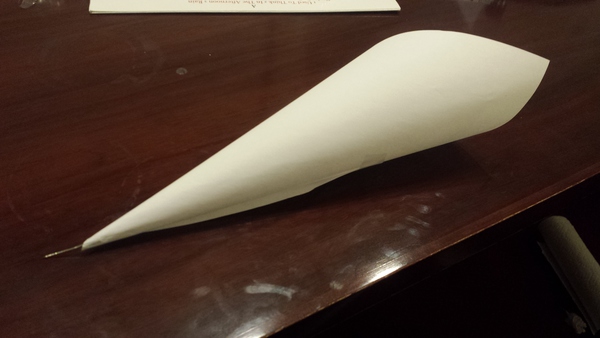 Simplicity itself.
Simplicity itself.This board was based on neil's motor board, but with an addition 2x2 connector connecting two pins to ground, so that in the future I could wire up buttons that could control the motor.
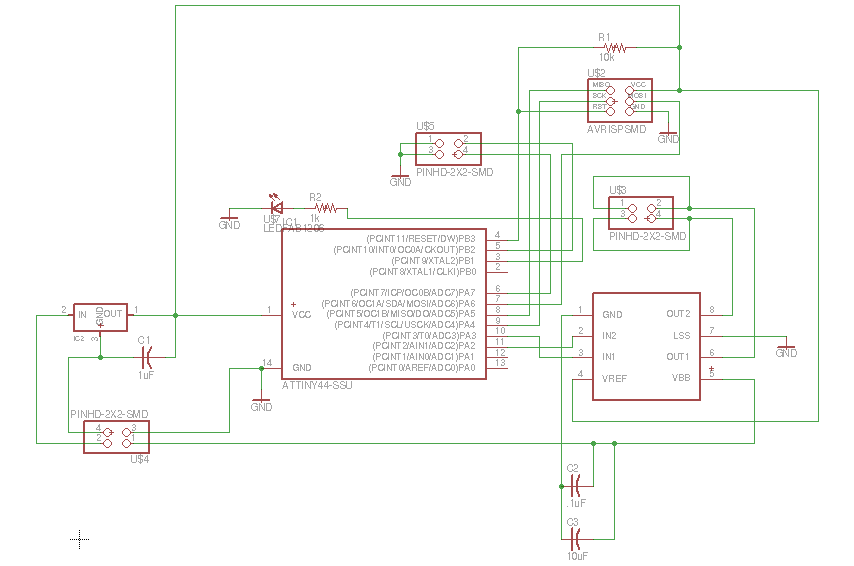
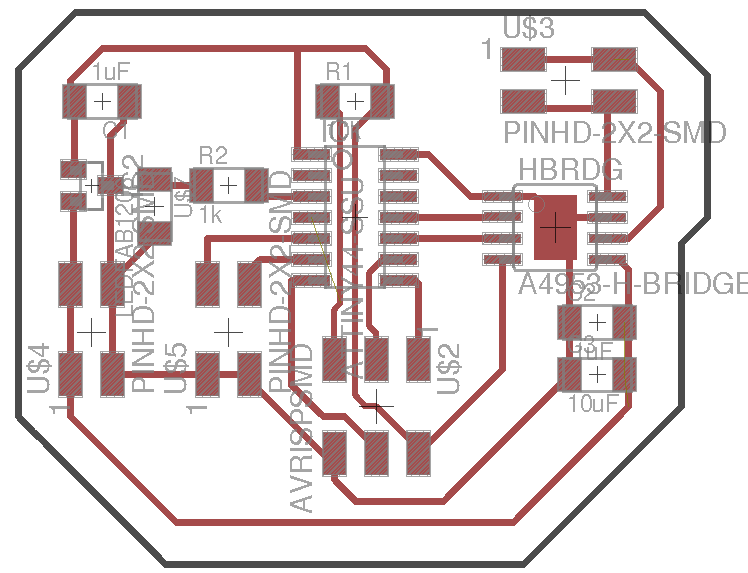
Schematic Board Traces Outline
Milling and fabricating the board was straightforward. However, for a very long time Neil's code did not appear to work at all. I eventually realized that the problem was that I had made the connector that conveyed power to the motors out of a 2x3 connector piece, and thus had pieces of wire that were unused; and I was using one of the wrong pieces of wire for one of the leads! In the process of doing this, I had a solid evening trying to debug the problem, testing that the motor works with the signal generator, learning to use the power supply to power the circuit, and learning to use the oscilloscope to see the PWM waves in the various parts of the circuit. In any case, once I figured out my bug, the below code worked:
And here is a wonderful video of the motor finally turning (Tim Fallon is holding it for me, since otherwise it moves around...)
When I was growing up in Moscow, I had these books which would suggest various physical experiments to do. Make a tornado in a box, etc. I think these were very important to me. One I never got around to doing, however, was to make a record player. I've never played a record. I went to a store and got this one (... 90s rapper + modern singer-songwriter? weird...):
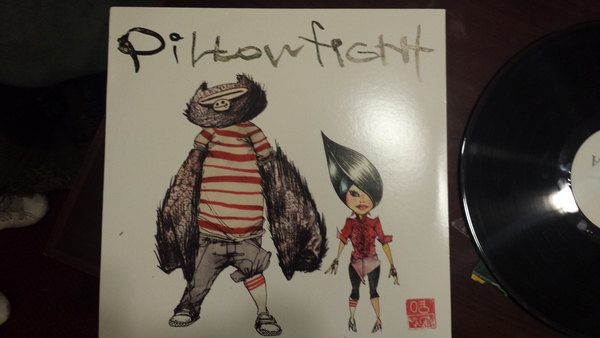
Then, hoping that physics works, I took some paper, rolled it into a cone, and taped it closed. Then, I taped a nail to the bottom.
 Simplicity itself.
Simplicity itself.
I stuck a nail through a piece of cardboard which I taped to a table, and I put the record on it.
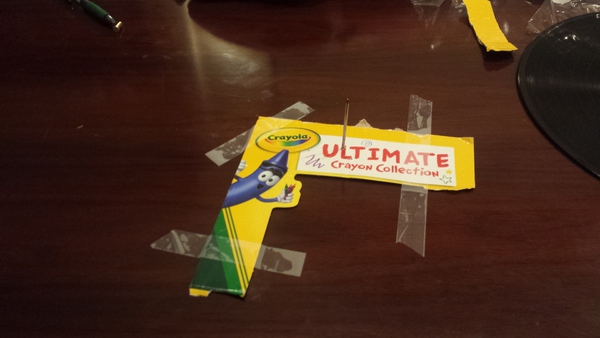
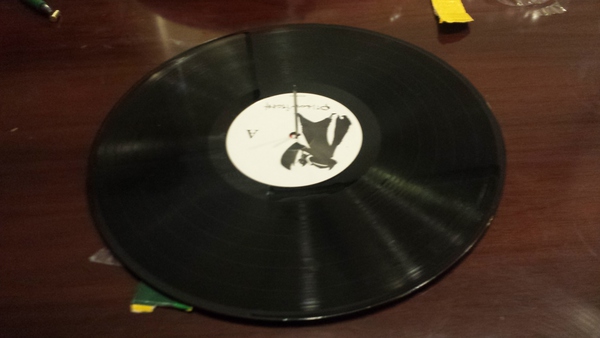
And, amazingly, it works!!!